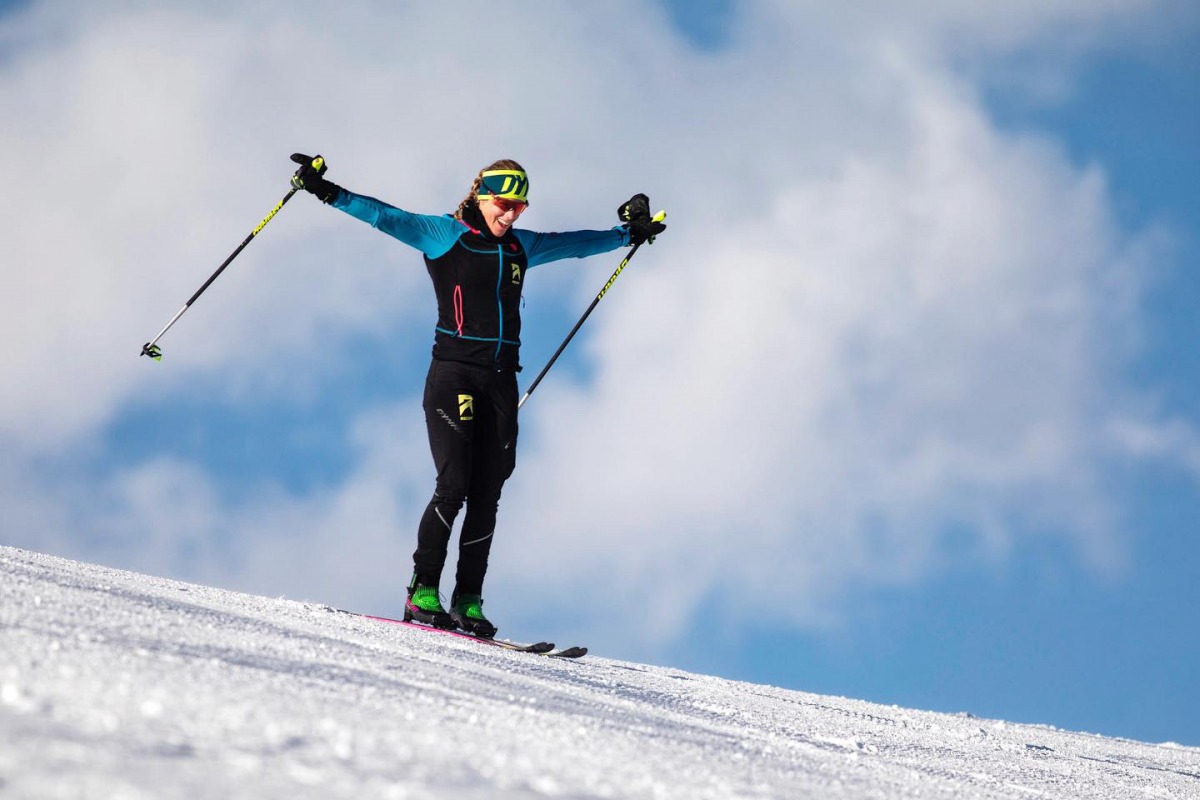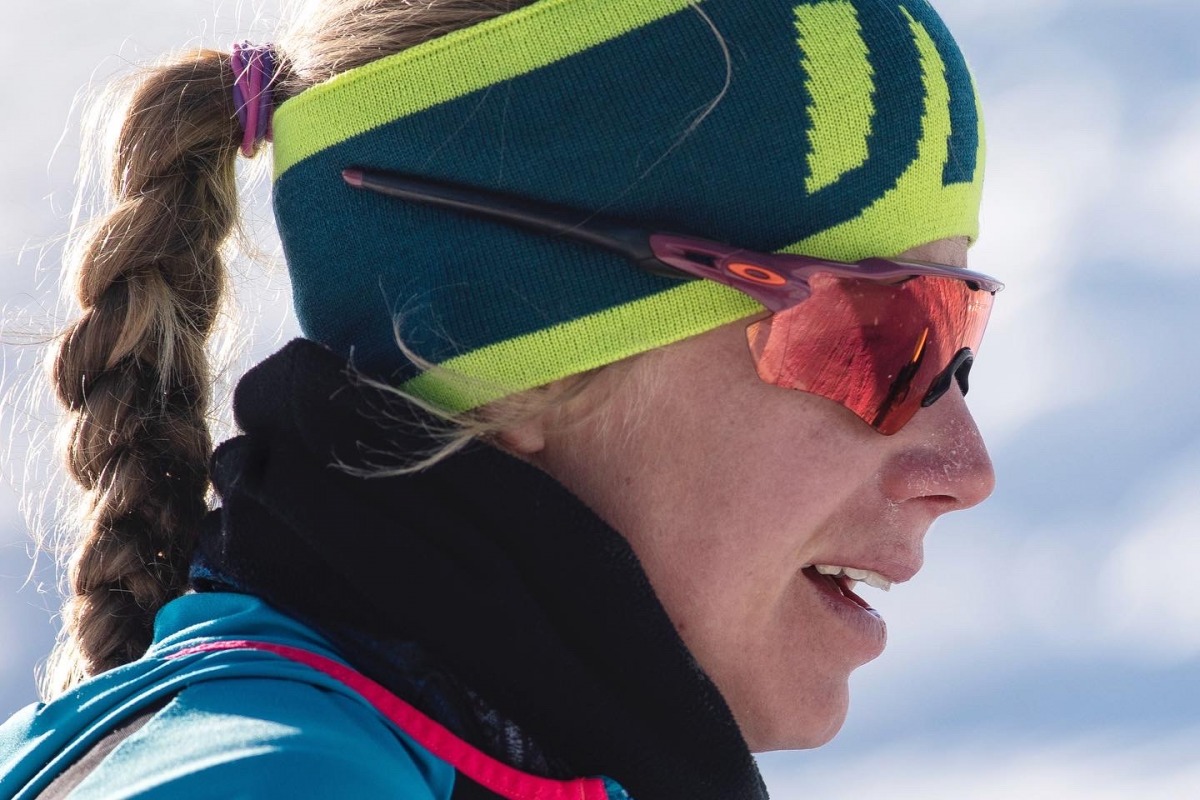On March 13, 2021, Boulder-based Spartan athlete Rea Kolbl set a new female record for the most vertical climbed on skis in 24 hours: 55,045 feet. She completed the challenge at Tiehack Ski Area, near Aspen, the same spot where Sean Van Horne attempted to break the men’s record in 2019. Over 32 laps that ranged from 35-45 minutes up and down, she climbed 50,656 feet at a pace of 2100 feet an hour.
Though she grew up skiing resorts in Slovenia, Rea is relatively new to the North American skimo race scene. Since she first competed in Aspen’s Power of Four in 2019 though, she’s been hooked, gradually working her way up the women’s ranks. She’s now a regular on podiums.
Unfortunately, Rea’s March 13 victory was short lived. Just eight days after, Italian ski mountaineer racer Martina Valmassoi took the crown by climbing 57,980 feet in 24 hours. This is pretty incredible: two fiercely strong women setting world vertical records within days of one another.
I called Rea up to talk about strategy, training, and whether she’ll do it again.
WS: What gave you the idea to go for the 24 hour vertical skimo record?
RK: I’m mostly intrigued by these long efforts and being the best at something sounds very cool. I was eying that record for quite a while but all the previous years the rate at which you had to go per hour seemed ridiculous to me.
In January my friend invited me to to skimo for fun to celebrate the inauguration by going from 2am until lifts spin at Keystone. I ended up doing 14,000 feet of gain which surprised me. I did the math and realized maybe I could potentially break the record. So I talked to my coach and promised him that I would treat all of my races this year as training, not actually focus on any of them as proper effort.
WS: You were doing a lot of races this winter, what else did you do to prepare?
RK: I did three or four 6-hours max efforts but in sustainable heart rate zones. It was like: how hard could I go so at the end of 6 hours I felt like I could keep going? Then I would also do a race on Saturday and then a big day in the backcountry on Sunday. Those were usually way slow and not super enjoyable on the way up but I think they build the strength in my legs just because I went from being on really light gear going really fast on Saturday to slogging up with logs on my feet on Sunday.
WS: What gear were you on?
RK: Dynafit DNA Pintec boots and P49 binding on DNA race skis. It’s a funny story — I had just started working with Dynafit before the effort. Then on Tuesday before the Power of Four, so 10 days before my record attempt they told me they had the Pintec boot in my size. The boots fit but require a different binding. So the guys at Dynafit quickly mounted another pair of skis for that and I tried them in the Power of Four, thinking, well this could either go really well or horribly wrong. I didn’t put an insole in the boot so that gave me a blister on the balls of my feet.
I figured I had a week to dial them before the 24 hours, but then Dynafit needed the boots back to mount another pair of skis for it. The only way I could really test it was to have one boot on and one shoe on and walk around. I actually figured out the insole problem and had no blisters for the 24 hour which kind of blew my mind.
WS: What did you eat during the 24 hours?
RK: From my experience in previous races, I’ve basically learned that what you think is going to work is probably not going to. I cooked 10 pounds of mashed potatoes that week before, I got some pancakes and crepes and a lot of real food, thinking that might be what I will want. But actually my stomach didn’t want any of that. I just ended up eating energy gels and liquid nutrition for the whole 24 hours. I had two bowls of ramen at some point in the night because I was getting a little cold. Other than that it was 24 hours of energy gels.
The eating was probably the hardest part but luckily the laps at Tiehack ended up being between 35 and 45 minutes so I would just make sure I had an energy gel every time I was down at the bottom. After the first 2-3 minutes up it flattens out, so I would wait for my heart rate to go down and I would eat there so I never really stopped in the 24 hours. I probably ended up eating 300 calories an hour every hour, which is probably why I never felt lower energy.
WS: Did you have any dark moments or were you mostly in good spirits throughout?
RK: I actually had a ton of fun! A lot of people came out to ski with me so I always had company. I did struggle a little bit at midnight, eight hours in. It was at the point where I started to feel things. After that I took a caffeine pill and ibuprofen and life was good again for the rest of it (laughs).
WS: What sort of things go through your head when you’re doing an effort like that?
RK: I tend to get pretty distracted by surroundings. I remember looking at the way the snowcats were casting shadows and the trees were moving it around and how beautiful the stars were. A lot of it too is just checking in with my body to see how my feet are feeling, how my stomach is feeling, how are my energy levels. I ask is what I’m doing right now the best that I can be. A few times I thought maybe I can go a little faster, so I went faster for 10 seconds and started coughing. I was like nah, maybe not, I think I’m doing just fine.
A lot of the time too I’m doing the math. Now I’m at this elevation and I have this much until record and this many hours and how many feet per hour is that. I just like to distract myself.
I had company which is very different from the previous 24 hour efforts. A lot of it was like i don’t hink I can talk but just tell me stories, so I just listed to what they were saying.
WS: Why did you decide to do it at Tiehack? Did you consider any lower elevation spots?
RK: I spent probably a month looking at ski resort maps and measuring slopes on CalTopo. I did find a pretty perfect slope in Idaho. The base was at 4000 feet and it was basically the same profile as Tiehack: straight up, 1700 feet per lap in about 1.2/1.3 miles. I called them and they were excited to let me do it but then I realized if I want support I really needed to stay in Colorado because I wasn’t going to convince 20 people like hey, take this trip to Idaho.
I feel like if I did go lower I probably could have gone a little bit faster and gotten a little bit more feet, but there’s always a re-do. Tiehack has really consistent grades compared to other resorts and is steep so it’s efficient up and down and the whole ski resort is groomed. Actually on the descents I didn’t do a single turn. I just straight shot everything because it was perfectly groomed, perfect conditions. In the end I knew where all the bumps were so I knew when to soften my knees. I think that also saved me a lot of energy because the downhill was a recovery.
WS: And then the record that you set was beaten just a few days later. What went through your head when you found out?
RK: I actually found out Martina was going for it probably two weeks before I was going to do mine. And I knew I was going to go first, so I had that in mind when I was skinning. When I broke the 50,000 foot record and there were two hours left, so I just tried to keep going as hard as I can. I did slow down a little bit which I think is part mental and you can’t really fight it, like when your brain is like well we’re done now. My lap times went down by five minutes which is pretty significant.
But I do feel like I did everything I could and thinking back, it was perfect. There’s nothing I could’ve done differently other than going to sea level. Of course you’re a little disappointed when your record goes but it’s inevitable somebody’s going to break it sooner or later. This was sooner rather than later (laughs), but I feel like if I didn’t do 55,000 feet, I don’t think she would have done 58,000 feet and now the women’s record is 58,000 feet. So that’s pretty cool.
WS: Do you think you’ll try again?
RK: People asked me that right after and I was like, never! Go away. But I’ve already forgotten a lot of the pain parts, so I do think I would go for it again.
Manasseh Franklin is a writer, editor and big fan of walking uphill. She has an MFA in creative nonfiction and environment and natural resources from the University of Wyoming and especially enjoys writing about glaciers. Find her other work in Alpinist, Adventure Journal, Rock and Ice, Aspen Sojourner, AFAR, Trail Runner and Western Confluence.



